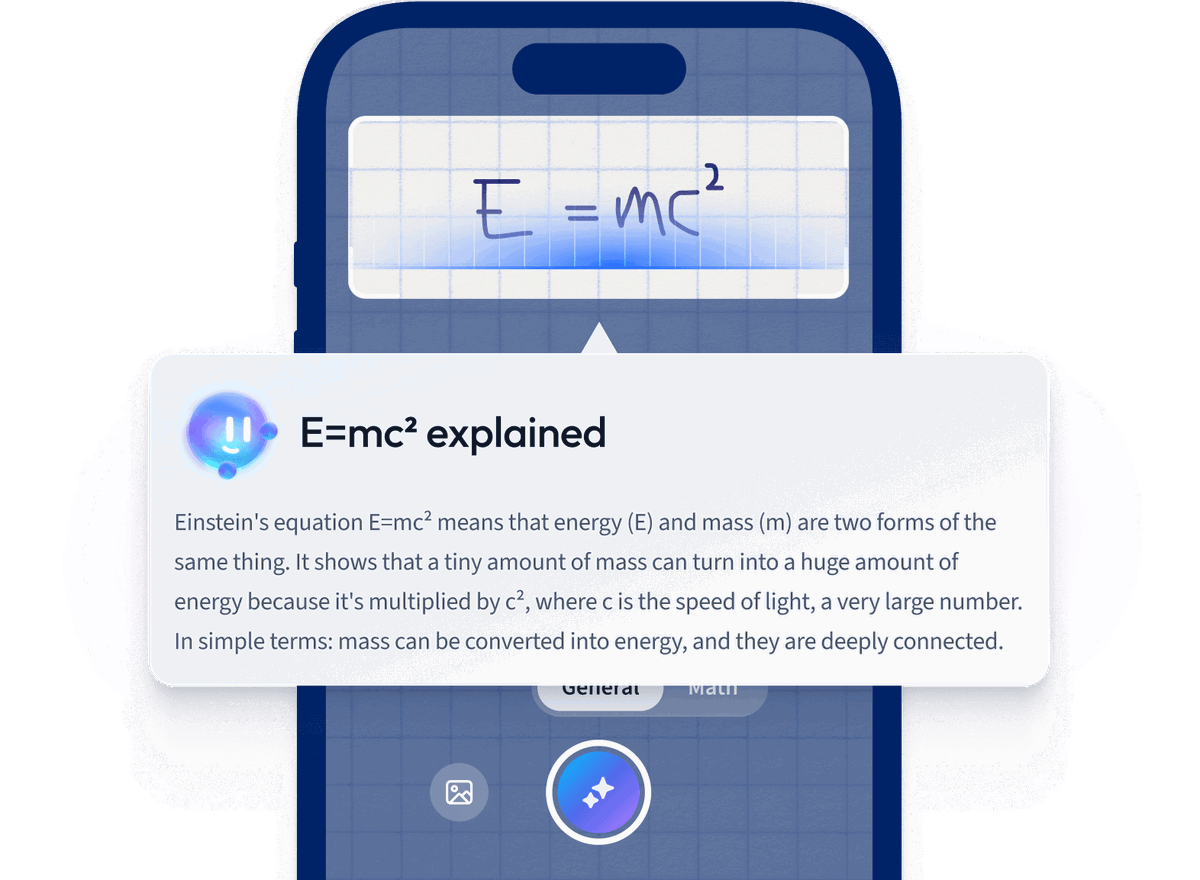Energy in Simple Harmonic Motion
We remember that in order for a system to complete one oscillation cycle in simple harmonic motion, the object is initially released from some displacement from the equilibrium position, passes through the equilibrium position, reaches the maximum displacement at the other end, and passes again through the equilibrium position before returning to its starting point. At maximum displacement from the equilibrium point, the potential energy is at its maximum while its kinetic energy is equal to \(0\,\mathrm J\), as the velocity at this moment is zero. At the equilibrium point, the potential energy is zero and the kinetic energy is a maximum. If we examine the other points, the kinetic and potential energies have different values. We can see energy is constant and conserved in simple harmonic motion.
 Fig 1 - Conservation of energy in SHM Systems. We can see energy is interchanging between potential energy and kinetic energy in every moment of the oscillating motion.
Fig 1 - Conservation of energy in SHM Systems. We can see energy is interchanging between potential energy and kinetic energy in every moment of the oscillating motion.
Potential Energy in Simple Harmonic Motion
We consider a spring-mass system to find the potential energy expression in an example of simple harmonic motion. The spring force is a conservative force, so we can define the potential energy for it. As a quick reminder, a conservative force is any force that is independent of an object's path, such that it depends only on the displacement of the object. The spring's potential energy is the energy accumulated in the spring when it is compressed. To find the expression, we can determine the work done by the force solving an integral or, more easily, we can plot the spring force as a function of position and determine the area under the curve.
$$\triangle U=-\int_a^b{\overset\rightharpoonup F}_{\text{conservative}}\cdot\overset\rightharpoonup{\operatorname dr}$$
 Fig 2 - Spring force as a function of position to illustrate how to determine the spring's potential energy by calculating the area below the curve.
Fig 2 - Spring force as a function of position to illustrate how to determine the spring's potential energy by calculating the area below the curve.
From the above figure, we see that the area under the curve is a triangle. So, we can easily determine the expression of the spring's potential energy:
$$\begin{array}{rcl}U&=&\frac12(x)(kx),\\U&=&\frac12kx^2.\end{array},$$
where \(k\) is the spring constant that measures the stiffness of the spring in Newtons per meter \((\frac{\mathrm N}{\mathrm m})\) and \(x\) is the object's displacement from equilibrium in meters \((\mathrm m)\). This is a model based on experimental evidence of Hooke's Law.
We know the conservative force that acts on the spring-mass system, so we can solve the integral to find the potential energy stored in the spring.
$$U_s=-\int_0^x(-kx)dx=\frac12kx^2$$
Kinetic Energy in Simple Harmonic Motion
Now that we know energy is conserved in simple harmonic motion, and we have the expression for the potential energy, we can determine the expression for velocity, as we know the equation for the kinetic energy:
$$\begin{array}{rcl}K_i+U_i&=&K_f+U_f,\\\frac12mv_i^2+\frac12\omega^2mx_i^2&=&\frac12mv_f^2+\frac12\omega^2mx_f^2.\end{array}$$
Initially, we are at maximum displacement so, \(v_i=0,\;x_i=A,v_f=v,\;and\;x_f=x\). We substitute the values into the equation above and solve for the velocity:
$$\begin{array}{rcl}\frac12\omega^2mA^2&=&\frac12mv^2+\frac12\omega^2mx^2,\\v^2&=&\omega^2(A^2-x^2),\\v&=&\omega\sqrt{A^2-x^2}.\end{array}$$
Now that we know the expression for the velocity of the object undergoing simple harmonic motion, we can determine the equation for the kinetic energy of simple harmonic oscillators:
$$\begin{array}{rcl}K&=&\frac12mv^2,\\K&=&\frac12m\omega^2(A^2-x^2).\end{array}$$
Total Mechanical Energy in Simple Harmonic Motion
Now that we know the expressions for kinetic and potential energy in simple harmonic motion, we can determine the equation for the total mechanical energy of a simple harmonic oscillator.
$$\begin{array}{rcl}E&=&K+U,\\E&=&\frac12k(A^2-x^2)+\frac12kx^2,\\E&=&\frac12kA^2.\end{array}$$
Consider a spring with spring constant \(k=1\;{\textstyle\frac{\mathrm N}{\mathrm m}}\) and a box of mass \(m=4\;\mathrm{kg}\) fixed to the spring. What will be the total mechanical energy of the spring-mass system?
$$\begin{array}{rcl}E&=&\frac12(1\;{\textstyle\frac{\mathrm N}{\mathrm m}}){(4\;\mathrm{kg})}^2,\\E&=&\frac12(16\;{\textstyle\frac{\mathrm N\;\mathrm{kg}^2}{\mathrm m}}),\\E&=&8\;\mathrm J.\end{array}$$
Another way to visualize the total mechanical energy is to think in terms of the expressions for the position and velocity of a simple harmonic oscillator given by
$$\begin{array}{rcl}x&=&A\cos\left(\omega t+\phi\right),\\v&=&-A\omega\sin\left(\omega t+\phi\right).\end{array}$$
If we examine the energy of the system, we see that the potential energy oscillates as a cosine-squared function, while the kinetic energy oscillates as a sine-squared function.
$$\begin{array}{rcl}E&=&K+U,\\E&=&\frac12mv^2+\frac12kx^2,\\E&=&\frac12mA^2\omega^2\sin^2\left(\omega t+\phi\right)+\frac12kA^2\cos^2\left(\omega t+\phi\right),\\E&=&\frac12\cancel mA^2\left(\frac k{\cancel m}\right)\sin^2\left(\omega t+\phi\right)+\frac12kA^2\cos^2\left(\omega t+\phi\right),\\E&=&\frac12kA^2\sin^2\left(\omega t+\phi\right)+\frac12kA^2\cos^2\left(\omega t+\phi\right),\end{array}$$
where the trigonometric identity \(\cos^2\left(\theta\right)+\sin^2\left(\theta\right)=1\). The mechanical energy is given by
$$E=\frac12kA^2.$$
So, we see the total mechanical energy of the simple harmonic oscillator is the sum of the kinetic energy of the mass and the potential energy stored in the spring. The energy of the system is proportional to the square of the amplitude, such that the amplitude affects the total energy. Also, we see that the total energy in this system is constant over time.
A block of mass \(m=2.0\;\mathrm{kg}\) is attached to an ideal spring of force constant \(k=500\,{\frac{\mathrm N}{\mathrm m}}\). The amplitude is \(8.0\;\mathrm{cm}\). What is the total energy of the oscillator and the speed of the block when it’s \(4.0\,\mathrm{cm}\) from equilibrium?
When the block is at amplitude position, the kinetic energy is zero.
$$\begin{array}{rcl}E&=&K+U,\\E&=&0+\frac12kA^2,\\E&=&\frac12(500{\textstyle\frac{\mathrm N}{\mathrm m}}){(0.08\;\mathrm m)}^2,\\E&=&1.6\;\mathrm J.\end{array}$$
To determine the expression for the velocity, we solve for \(v\):
$$\begin{array}{rcl}E&=&\frac12mv^2+\frac12kx^2,\\v&=&\sqrt{\frac{E-{\displaystyle\frac12}kx^2}{\displaystyle\frac12m}}.\end{array}$$
So at \(x=4.0\;\mathrm{cm}\)
$$\begin{array}{rcl}v&=&\sqrt{\frac{E-{\displaystyle\frac12}kx^2}{\displaystyle\frac12m}},\\v&=&\sqrt{\frac{(1.6\;\mathrm J)-{\displaystyle\frac12}(500\;\frac{\mathrm N}{\mathrm m}){(0.04\;\mathrm m)}^2}{\displaystyle\frac12(2.0\;\mathrm{kg})}},\\v&=&1.1\;{\textstyle\frac{\mathrm m}{\mathrm s}.}\end{array}$$
Mechanical Energy in SHM Systems - Key takeaways
- Energy is constant and conserved in simple harmonic motion.
- At maximum displacement from the equilibrium point, the potential energy is at its maximum while kinetic energy is zero, as the velocity on this moment is zero.
At the equilibrium point, the potential energy is zero and the kinetic energy is a maximum.
The spring force is a conservative force, so we can define a potential energy for it.
A conservative force is any force that is independent of an object's path, such that it depends only on the displacement of the object.
We can plot the spring force as a function of position and determine the area under the curve to get the equation for potential energy. The area of this curve is a triangle.
The spring's potential energy is \(U=\frac12kx^2\).
The kinetic energy of the spring-mass system is \(K=\frac12k(A^2-x^2)\).
The total mechanical energy of the simple harmonic oscillator is the sum of the kinetic energy of the mass and the potential energy stored in the spring
The energy of the system is proportional to the square of the amplitude, such that the amplitude affects the total energy, \(E=\frac12kA^2\).
How we ensure our content is accurate and trustworthy?
At StudySmarter, we have created a learning platform that serves millions of students. Meet
the people who work hard to deliver fact based content as well as making sure it is verified.
Content Creation Process:
Lily Hulatt is a Digital Content Specialist with over three years of experience in content strategy and curriculum design. She gained her PhD in English Literature from Durham University in 2022, taught in Durham University’s English Studies Department, and has contributed to a number of publications. Lily specialises in English Literature, English Language, History, and Philosophy.
Get to know Lily
Content Quality Monitored by:
Gabriel Freitas is an AI Engineer with a solid experience in software development, machine learning algorithms, and generative AI, including large language models’ (LLMs) applications. Graduated in Electrical Engineering at the University of São Paulo, he is currently pursuing an MSc in Computer Engineering at the University of Campinas, specializing in machine learning topics. Gabriel has a strong background in software engineering and has worked on projects involving computer vision, embedded AI, and LLM applications.
Get to know Gabriel









 .
. .
.



